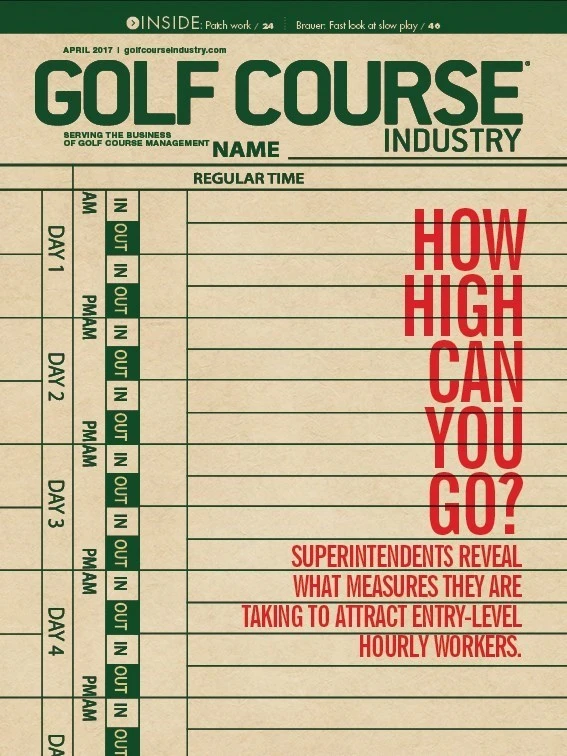There is no question that we, as an industry, are superb at preaching to the choir.
We work ourselves into a frenzy about how Golf Channel or CBS should do more to recognize the host superintendent for TV events. We vigorously denounce course vandalism or idiot golfers who take divots out of greens. When pictures are posted online after a novice operator dumps a mower into a pond we either laugh or castigate the person who posted them for “sending the wrong signal” to the public.
We pour time and attention into talking to each other. That’s absolutely awesome in many ways…this community shares information and ideas better than any I’ve seen or any other green industry market we work with here at GIE Media. There is great value in preaching to the choir, as long as we’re also preaching to the heathens who’ve yet to be converted.
The yet to be converted include damn near every golfer in the U.S. (about 24 million folks) and the rest of the country (another 300 million or so). Getting them to listen will be no small task. It only works when all of us chip in and do our part.
And, that’s happening a little.
It may not seem like it, but we’ve made strides in recognizing the role and value of superintendents over the past few decades. As a former communications director for GCSAA back in the ‘80s and ‘90s, I can assure you media appreciation of supers is vastly improved over those bad old days when reporters simply ignored us.
That’s partially because the national has done a good job of bending the ears of the folks at Golf Digest, NBC and the Golf Channel. Decades of reminding them about the super during events and providing them with agronomic info began to move the dial. And all of those healthy appearance fees the association paid to David Feherty, Jim Nantz, Johnny Miller and a half-dozen other TV golf commentators to come to GIS and learn firsthand have been a great investment.
We should also thank the USGA for going out of their way to pay tribute to superintendents in their communications, particularly the “Fore the Golfer” video series that is just awesome. Mike Davis and his team continue to be great friends to superintendents.
Finally, the growth in awareness is due in large part to individual efforts by eloquent and capable tournament hosts like Ken Mangum, Matt Shaffer, John Zimmers, Bob Farren, Mark Kuhns, Chris Tritabaugh and a dozen others. With respected, media savvy spokespeople appearing on television to explain agronomy, we win.
So we are gradually making progress with America’s golfers, at least via the golf media. But what about non-golfers? Those 300 million people who couldn’t care less and are likely predisposed to think that golf is a silly game for rich white people with too many rules and a manicured look that demands too much water and nasty old chemicals?
I call those folks civilians. They’re non-combatants in our fight to change golfers’ minds, yet they are just as important because their views influence local issues. You never know when a turf-related issue might pop up at a country commission or water board.
When we meet civilians, we need to be prepared to find ways to do a little simple propagandizing. In fact, it’s exactly the same messaging our industry uses around National Golf Day (which is/was April 26 this year).
- There are 15,000 golf courses in the U.S. and most are small businesses. They provide a place for average people to get exercise, enjoy the outdoors and have fun.
- Golf as a business has a $70 billion economic impact in the U.S. every year. It contributes more to the economy than the furniture industry or motion picture business.
- We help create 2 million jobs in the U.S. One of every 75 U.S. jobs has something to do with golf.
- About $4 billion in charitable support is raised annually by events.
- Golf isn’t just private clubs…75% of courses (about 11,000) are businesses open to the public.
- Golf courses represent 2.1 million acres of ecologically important maintained greenspace in this country. They are sanctuaries for wildlife, giant AC units that cool the space above and around them and huge filtration systems that pump out oxygen and filter water.
I like to do one more thing when I talk to civilians about golf. I’ll pull up a Google satellite map of their city and show them how much open greenspace golf creates in an otherwise crowded area. Non-golfers often have no idea how many golf courses are around them and how much green they represent in their community.
So, it’s up to all of us to tell the story. Last month my message was “practice what you preach.” This month, its’ “preach what you practice.”
Can I get an amen?

Explore the April 2017 Issue
Check out more from this issue and find your next story to read.
Latest from Golf Course Industry
- Editor’s notebook: Green Start Academy 2024
- USGA focuses on inclusion, sustainability in 2024
- Greens with Envy 65: Carolina on our mind
- Five Iron Golf expands into Minnesota
- Global sports group 54 invests in Turfgrass
- Hawaii's Mauna Kea Golf Course announces reopening
- Georgia GCSA honors superintendent of the year
- Reel Turf Techs: Alex Tessman





